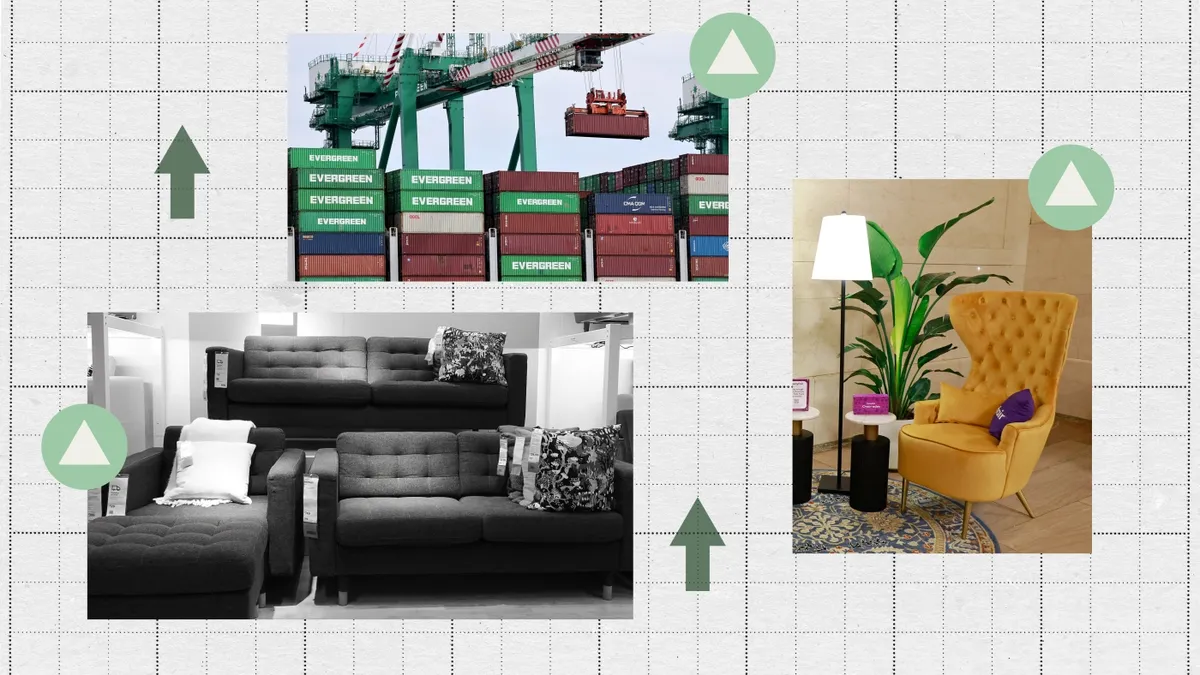
NPR's series, Cost of Living: The Price We Pay, delves into the factors driving price increases and explores how individuals are adapting after enduring years of persistent inflation. The question remains: how are higher prices affecting your daily life? If you have a personal story to share regarding furniture prices, consider filling out the submission form on NPR's website.
Since February 2020, the cost of bedroom furniture has surged by 11%, as reported by the Bureau of Labor Statistics. More significantly, prices for living room, kitchen, and dining room furniture have escalated by 25%. This drastic shift in pricing has raised concerns among consumers and industry experts alike.
Like many sectors, the furniture industry is grappling with increased operational costs, including utilities, insurance, and wages. A considerable spike in prices occurred during the pandemic as consumers rushed to purchase home office desks and outdoor patio sets, coupled with soaring shipping costs. However, experts in the industry assert that furniture prices have grown at a slower rate than overall inflation, which has climbed nearly 26% since February 2020. They also highlight that prices have decreased from their peak in 2022, indicating a nuanced market.
David Koehler, the owner of the Delaware-based chain Johnny Janosik Furniture, emphasizes a popular adage: “You could buy a $399 sofa in 1984, and you could still buy a $399 sofa today.” While not everyone seeks out a $399 sofa, its continued availability differentiates furniture from other major purchases, such as cars or appliances.
Aside from high-end craftsmanship, mass-market furniture retailers face immense pressure to keep prices competitive. Bill McLoughlin, editor-in-chief of Furniture Today, a trade publication, explains that the barriers to entry in the furniture business are notably low, resulting in a fragmented market. Additionally, furniture sellers compete not only with second-hand items but also against consumers’ other financial commitments, such as travel or home repairs.
The quest for lower prices has driven much of the manufacturing overseas, as labor costs abroad are significantly lower than in the U.S. This trend has persisted for over six decades, as labor remains a substantial component of product costs. Even in American furniture manufacturing hubs like Mississippi or North Carolina, many essential components, including fabrics and electronics, are sourced from countries like China.
During his first term, President Trump's tariffs increased the costs associated with importing furniture from China, prompting many manufacturers to relocate operations, primarily to Vietnam. Recently, Trump implemented new double-digit tariffs specifically affecting kitchen cabinets, vanities, and upholstered furniture. As a result, furniture giant Ashley Furniture raised prices on a majority of its products this June, leading the Home Furnishings Association to warn of cumulative cost increases for both retailers and consumers.
As the price of importing furniture continues to rise, American-made options may become more appealing. However, Koehler is concerned about how consumers will respond. “When we get feedback, they say, 'We would love to buy American,'” he notes. Yet, when faced with a choice between a $500 imported item and a $1,200 American-made one, many consumers opt for the cheaper option.
Many shoppers find themselves in a similar predicament to Erin Cummins from Connecticut, who is grappling with increasing costs of essential items like health insurance, car insurance, and groceries. “Every time we have company over, I look at that furniture and think, 'I really need to replace that,'” Cummins shares. However, after researching prices, she is often met with sticker shock and ultimately decides to postpone her purchase.
The furniture market is currently navigating a complex landscape marked by rising costs, competitive pressures, and shifting consumer behaviors. As prices continue to fluctuate, it remains essential for consumers to stay informed and adapt to the changing economic environment.